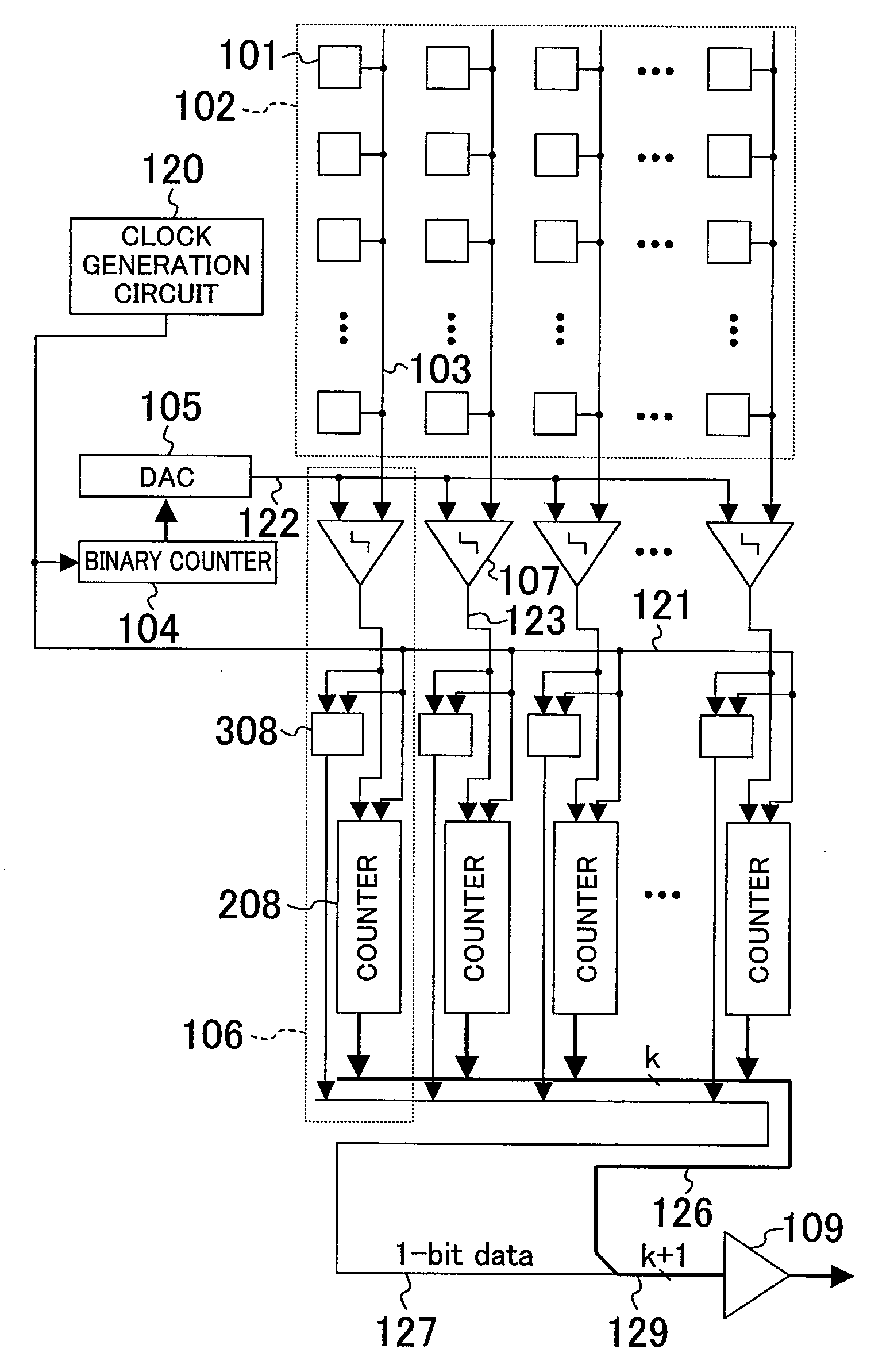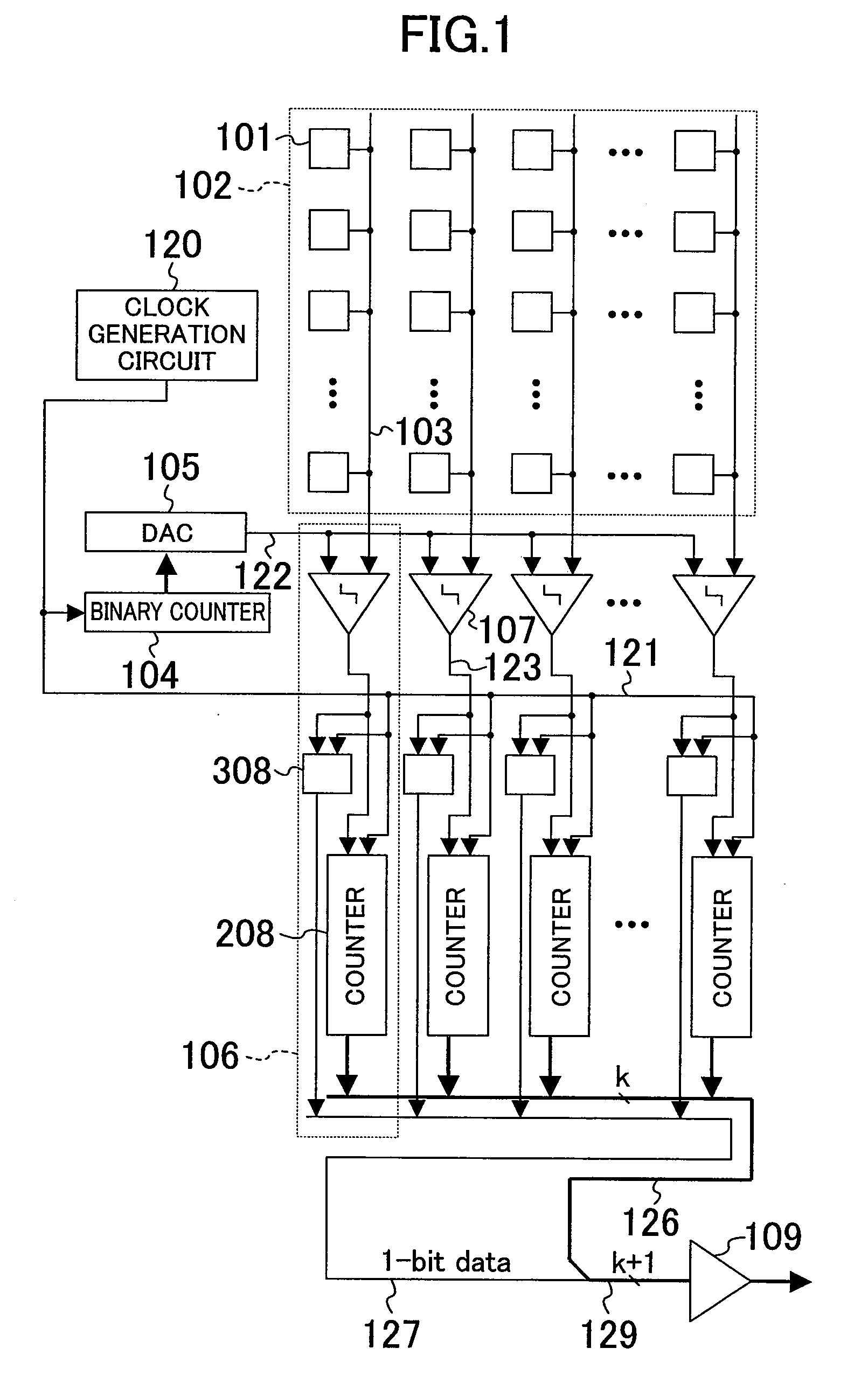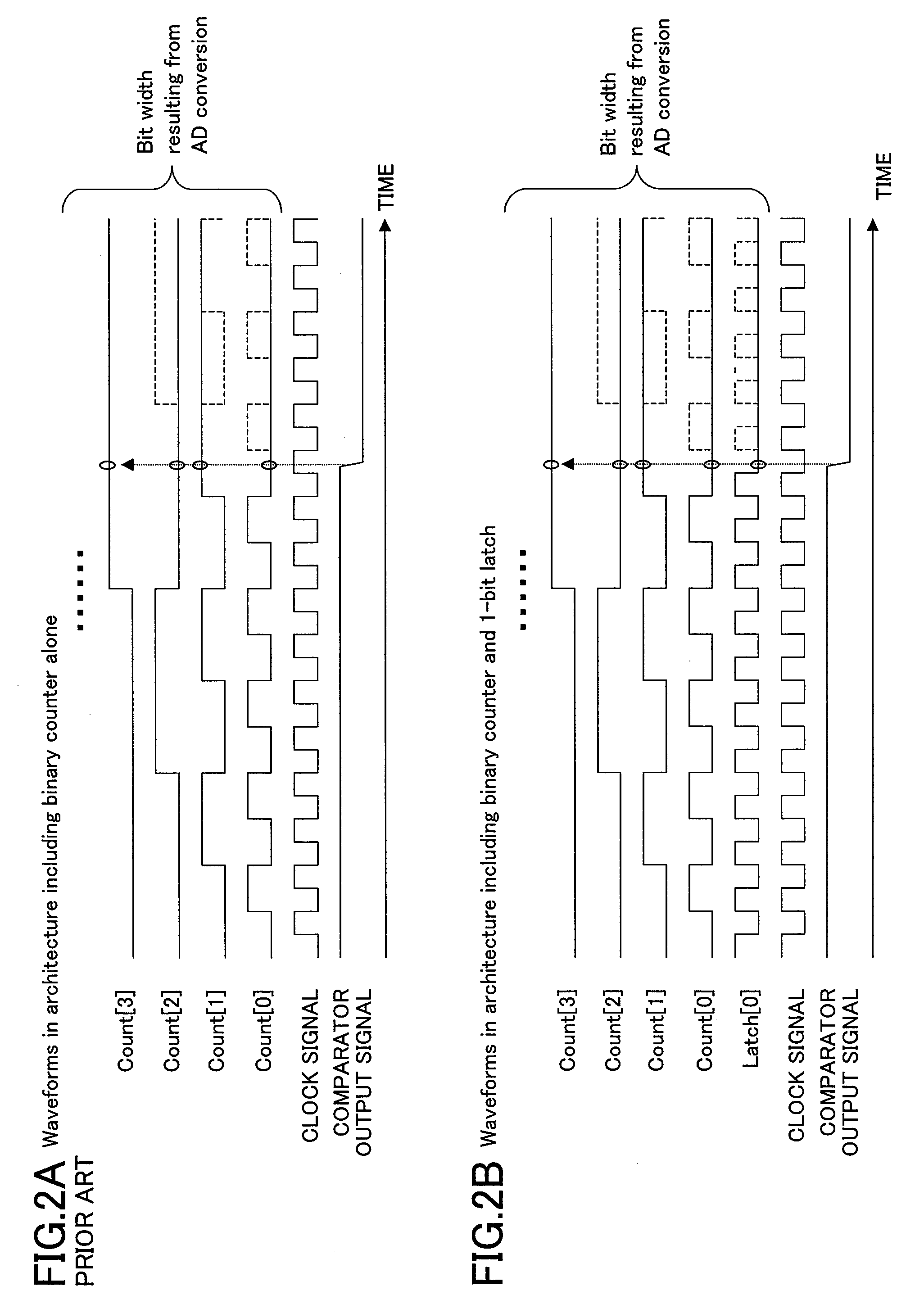Physical quantity detecting apparatus and method for driving the same
a technology of physical quantity and detecting apparatus, which is applied in the direction of instruments, television systems, and details of the television system, to achieve the effect of improving bit accuracy and lowering the frequency of the clock signal
- Summary
- Abstract
- Description
- Claims
- Application Information
AI Technical Summary
Benefits of technology
Problems solved by technology
Method used
Image
Examples
embodiment 1
[0075]FIG. 1 is a diagram for showing the architecture of a solid state imaging device (a MOS sensor) according to Embodiment 1 of the invention.
[0076]As shown in FIG. 1, the MOS sensor of this embodiment includes a pixel array (a sensitive element array) 102 in which pixels (sensitive elements) 101 are arranged in the form of a matrix; a column AD conversion circuit 106 provided corresponding to each column or a plurality of columns of pixels 101 for converting a signal output from a pixel 101 into a digital signal; a column scanning circuit (not shown) for controlling output of a digital signal converted and held by the column AD conversion circuit 106; output signal buses 126 and 127 for transferring the digital signal output from the column AD conversion circuit 106; a clock generation circuit 120 for supplying clock signals (including a counter clock signal and a latch clock signal); a binary counter 104; a DA conversion circuit (DAC; a reference potential generation circuit) 1...
embodiment 2
[0096]FIG. 5 is a diagram for showing the architecture of a MOS sensor according to Embodiment 2 of the invention. In FIG. 5, like reference numerals are used to refer to like circuits and members included in the MOS sensor of Embodiment 1 shown in FIG. 1 so as to omit or simplify the description.
[0097]As shown in FIG. 5, the MOS sensor of this embodiment is the same as the MOS sensor of Embodiment 1 in the connection from a pixel array 102 to comparators 107. However, each column AD conversion circuit 106 of this MOS sensor is different from the column AD conversion circuit of Embodiment 1 in including not only the comparator 107 and a column counter 208 but also a 2m-1-bit latch 408. The column AD conversion circuit 106 is provided corresponding to each column in FIG. 5.
[0098]The MOS sensor of this embodiment further includes a π / 2m-1 phase shift code generation circuit 112 for receiving a clock signal 121 and a phase shift code / binary converter 113 provided on an output signal bu...
embodiment 3
[0121]FIG. 7 is a diagram for showing the architecture of a MOS sensor according to Embodiment 3 of the invention.
[0122]As shown in FIG. 7, the MOS sensor of this embodiment is the same as the MOS sensor of Embodiment 1 in the connection from a pixel array 102 to comparators. However, as a characteristic of the MOS sensor of this embodiment, a column AD conversion circuit 106 provided corresponding to each column of pixels 101 includes an up / down counter (hereinafter referred to as the U / D counter) 218. Also, the MOS sensor of this embodiment includes a sequencer 111.
[0123]Each column AD conversion circuit 106 includes a comparator 107, the U / D counter 218, an up-counting latch (hereinafter referred to as the U latch) 318 and a down-counting latch (hereinafter referred to as the D latch) 328.
[0124]A clock generation circuit 120 supplies a clock signal 121 not only to a binary counter 104 but also to the U / D counter 218, the U latch 318 and the D latch 328 of every column. A binary v...
PUM
 Login to View More
Login to View More Abstract
Description
Claims
Application Information
 Login to View More
Login to View More - R&D
- Intellectual Property
- Life Sciences
- Materials
- Tech Scout
- Unparalleled Data Quality
- Higher Quality Content
- 60% Fewer Hallucinations
Browse by: Latest US Patents, China's latest patents, Technical Efficacy Thesaurus, Application Domain, Technology Topic, Popular Technical Reports.
© 2025 PatSnap. All rights reserved.Legal|Privacy policy|Modern Slavery Act Transparency Statement|Sitemap|About US| Contact US: help@patsnap.com



